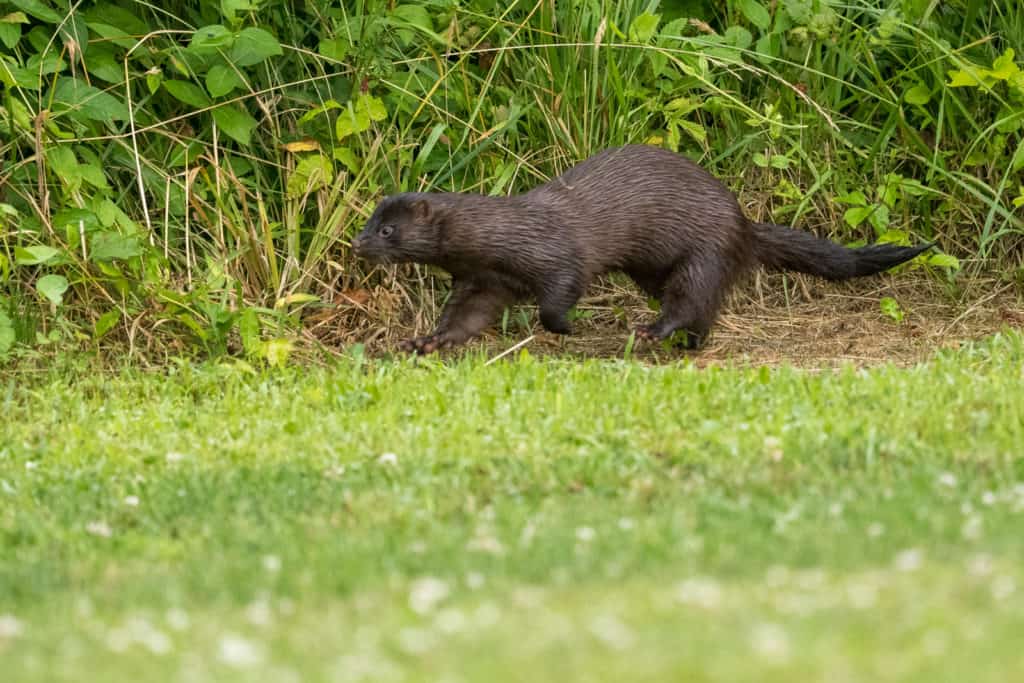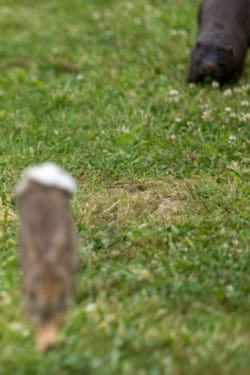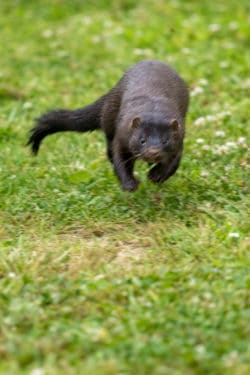wild. life.
Visitor Chuck Babbitt was quick with his camera when visiting Bryn Coed Preserve recently, and captured some amazing photos of an American mink.

Photo: Chuck Babbitt
Mink are carnivorous mammals native to most of North America. Members of the mustalid family that also includes weasels, badgers, otters, and others, they feed on a variety of small animals like rabbits, rodents, fish, and birds. They have webbed feet and sharp claws to help them both swim for aquatic prey and climb trees. During winter, they sometimes catch and store surplus food reserves in their dens as they don’t hibernate.
Like weasels, female minks have what is called “delayed implantation”: embryos do not implant and begin completing their development until approximately 30 days before birth. Three to six young minks are born—naked and blind—in a hollow log, rock cavity, or abandoned muskrat den.
Chuck says he saw the mink bounding along the edge of the trail and quickly attached his Labrador retriever’s leash to his belt so he could grab his camera and take a few photos.
“I figured that would be the last I saw of it but after I crossed the bridge and came around the corner I saw it hunting through the grass at the side of the trail. I couldn’t get focus on it and soon I lost sight of it. Suddenly a cottontail came racing out of the grass straight down the trail toward me with the mink in hot pursuit. When the mink finally saw my dog and me, it made a hard turn into the brush. It was a very exciting viewing!”

Photo: Chuck Babbitt

Photo: Chuck Babbitt
These animals need large forested areas near water for hunting and breeding, which is why you may just spot one on a visit to one of Natural Lands’ preserves!
